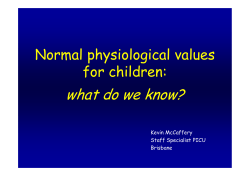
How to be an Effective Teacher The First Days of School By
How to be an Effective Teacher The First Days of School By Dr. Harry K. Wong and Rosemary Wong Four Stages of Teaching • Fantasy – teacher does fun activities; tries to relate and be friends with students • Survival – teacher spends time complaining about his/her job; finds busywork for students to do • Mastery – teacher knows how to manage the classroom, teach for mastery, and has high expectations • Impact – makes a difference in the lives of their students What is an Effective Teacher? • Efficient- Doing things right • Effective – Doing the right thing • The effective teacher AFFECTS lives. Characteristics of an Effective Teacher • Is a good classroom manager • Designs lessons to reach mastery • Has positive expectations that students will be successful “Each student comes to school with an unlit candle with the expectation for you to light it.” Ineffective Teacher • The ineffective teacher is simply not doing what the effective teacher is doing. • The ineffective teacher resists resources available to them, relies on busywork as an excuse for learning. • The ineffective teacher will whine that nothing applies to them, fully expecting others to tell them what to do. • -www.teachers.net/gazette/NOV01/wong.html Effective Teacher • Understands how research is done • Uses proven research based practices – Research shows to achieve higher level comprehension that you should intersperse questions throughout text – Understands that these practices are used by thousands of other teachers and are tried and true methods that work Beliefs of an Effective Teacher • It is the teacher who makes the difference in the classroom. • The most important factor in school learning is the ability of the teacher. • There is an extensive body of knowledge about teaching that must be known by the teacher. • The teacher must be a decision maker able to translate the body of knowledge about teaching into increased student learning. – Madeline Hunter Discipline and Procedures How to Manage Your Classroom -Harry K. Wong and Rosemary T. Wong Parts of a Discipline Plan • • • • Rules – what the expected behaviors are. There should be only 3-5 rules. (Examples of effective and ineffective rules) Consequences – what the students chooses to accept if a rule is broken. Can be negative or positive. • Rewards-what the student receives for appropriate behavior. www.education-world/1_curr/curr301.shtml • If you don’t have a plan, then you’re planning to fail. – Harry K. Wong Activate Your Discipline Plan • 1. Post your rules. • 2. Post your consequences and rewards. • 3. Immediately enact the consequence when a rule is broken. • 4. Give positive feedback to individuals as well as to the class. • 5. Make your behavior predictable and consistent. Discipline and Procedures • Effective teachers have a plan. The number one problem in the classroom is not discipline; it is the lack of procedures and routines. • Discipline: concerns how students behave – Has penalties and rewards – Discipline plan example • Procedures: concerns how things are done – Has no penalties and rewards Procedures and Routines • Procedures - what you want the student to do • Effective teachers manage with procedures. • Procedures help students work with less confusion. Question: How would procedures and routines benefit special needs students? • Examples: – How to enter the classroom – What to do when they enter a classroom – What to do when they are finished – How to get the teacher’s attention – What to do if a pencil breaks • Routines – what the students do automatically CLASSROOM PROCEDURES Mr. Cicek’s Classroom Dove Science Academy - Tulsa, OK WHY DO WE HAVE PROCEDURES? A procedure is the way that we do things. To do things right, we have to follow some simple procedures, for example: To open your locker, you have to select your combination as directed by the lock manufacturer. To cook a delicious meal, you need to follow the steps in the recipe. To place a call on your phone, you need to dial the number in the right order. So, to be successful in learning, you need to follow some simple procedures. Other Power Point Procedure Presentations • http://teachers.net/wong/NOV04/ • http://teachers.net/wong/FEB05/ • http://teachers.net/wong/OCT05/ Three Steps to Teaching Procedures • Explain – State, explain, model, and demonstrate the procedure • Rehearse – Rehearse and practice the procedure under teacher supervision until it becomes a routine. • Reinforce- Reteach, rehearse, practice, and reinforce the classroom procedure until it becomes a student habit or routine. Reasons Why Students Don’t Follow Procedures • Teacher has not thought out what happens in the classroom. • Students have not been trained to follow the procedures. • Teacher spends no time managing the classroom. • When a student does not perform a procedure correctly, there is no punishment. The student simply is taken back through the three step teaching process. Characteristics of a Well-Managed Classroom • Students are deeply involved in their work • Students know what is expected of them and are generally successful • There is relatively little wasted time, confusion, or disruption • The climate of the classroom is workoriented but relaxed and pleasant Half of Your Effectiveness is Determined Before You Leave Home • Prepare yourself, both academically and attitudinally, before you leave home and as you travel to school. • You increase the chance of student success and decrease the chance of student disruptions if the materials, classroom climate, and teacher are ready before the students arrive. Memorable Quote • “Perhaps the most valuable result of all education is the ability to make yourself do the thing you have to do, when it ought to be done, whether you like it or not.” -Thomas Huxley
© Copyright 2025





















